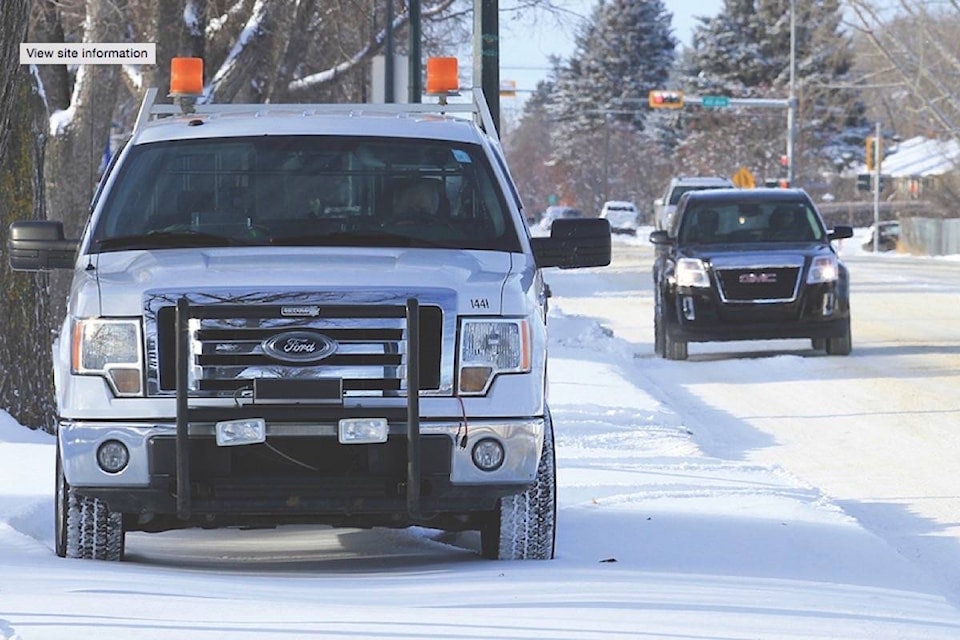The provincial government says photo radar is being used as a cash cow, but that doesn’t mean Red Deer drivers should expect to see big changes in the city.
“It’s my intention that we are going to humanely put the cash cow down,” Transportation Minister Brian Mason said Thursday as he released a report showing that photo radar generates about $220 million a year in revenue provincewide while reducing collisions by about 1.4 per cent.
Mason announced changes that include banning photo radar where speed limits change on highways, and not allowing photo radar on high-speed, multi-lane highways, unless there is documented proof of safety concerns.
Paul Goranson, Red Deer’s protective services director, said the city already does not put photo radar vans close to speed transition zones, and the city does not have high-speed, multi-lane highways.
“The examples they gave were Anthony Henday in Edmonton and Deerfoot in Calgary. It really doesn’t affect us at all because we don’t have any within Red Deer,” Goranson said.
The city already posts photo radar sites online, which is another requirement, he said.
“There’s nothing too significant that would have an impact on what we do.”
Red Deer was one of 28 communities that contributed photo radar data from 2016 for the review the province used to develop its guidelines.
Red Deer has 323 possible locations for photo radar vehicles and 10 red light locations. At any one time, photo radar will operate at four intersections and three photo radar vehicles could be running.
Goranson said while the province has been calling photo radar a cash cow for municipalities, 40 per cent of revenue collected by municipalities goes to the province.
Red Deer received $1.5 million in revenue from automated traffic enforcement in 2016-17. Edmonton collected the most at $50 million. Calgary got $38 million. Lethbridge took in $3.9 million. Spruce Grove collected $5.1 million.
Goranson said Red Deer’s revenue goes toward policing.
He said photo radar is intended to encourage people to drive slower, and the majority of people say that it does affect their driving behaviour.
“It’s to help people slow down, which leads to less collisions and less severe collisions, and better utilization of resources.”
Related:
Alberta changing ‘cash cow’ photo radar to focus on safety, not money
Photo radar continues to be a thorny issue in Red Deer
Municipalities and police agencies will have to present by March 2020 a clear plan to use photo radar, backed up by collision data to prove it’s being used at high-risk locations.
Goranson said the city will be required to provide some additional reporting, but the province is still working on the criteria to measure and demonstrate an improvement in safety.
‘They said they were going to work with us basically starting in June on what that data would be like and what that criteria would be.”
— With files from The Canadian Press
Red Deer RCMP traffic enforcement areas until Feb. 28.
School/playground zones: 55th Avenue, Lancaster Drive, Lawford Avenue, Ellenwood Drive, Nolan Street, 59th Avenue, Kerry Wood Drive, 60th Street, Cornett Drive, Dempsey Street, Carrington Drive, 43th Avenue.
Traffic corridors: 49th Avenue, 50th Avenue, 49th Street, Barrett Drive, Taylor Drive, Horn Street, Edgar Industrial Drive, Riverside Drive.
szielinski@reddeeradvocate.com
Like us on Facebook and follow us on Twitter
